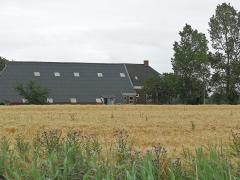Exploring global Cryptosporidium emissions to surface water
The protozoan parasite Cryptosporidium is a major cause of diarrhea worldwide. This paper presents the first model-based inventory with 0.5 by 0.5 degree resolution of global Cryptosporidium emissions from humans and animals to surface water in the year 2000. Our results may be useful to health organisations to identify priority areas for further study and intervention.
Lay-out of the cryptosporidium model
The model is based on distribution modelling of nutrients in animal manure and wastewater, because the sources and transport of oocysts and nutrients to surface water are comparable. Total emissions consist of point source emissions from wastewater and non-point source emissions from runoff of oocysts in manure from agricultural lands. Results indicate a global emission of 3×1017 oocysts annually, with comparable contributions from point and non-point sources. Hot-spot areas for point sources are large cities in China, India and Latin America, while the area with the largest non-point source emissions is located in China. Uncertainties in the model are large.
Areas for future study
Main areas for further study are:
- excretion rates of oocysts by humans and animals;
- emissions by humans not connected to sewage systems;
- retention of oocysts to determine surface water pathogen concentrations rather than emissions.
Authors
Specifications
- Publication title
- Exploring global Cryptosporidium emissions to surface water
- Publication date
- 31 January 2013
- Publication type
- Publication
- Magazine
- Science of The Total Environment
- Product number
- 1026




